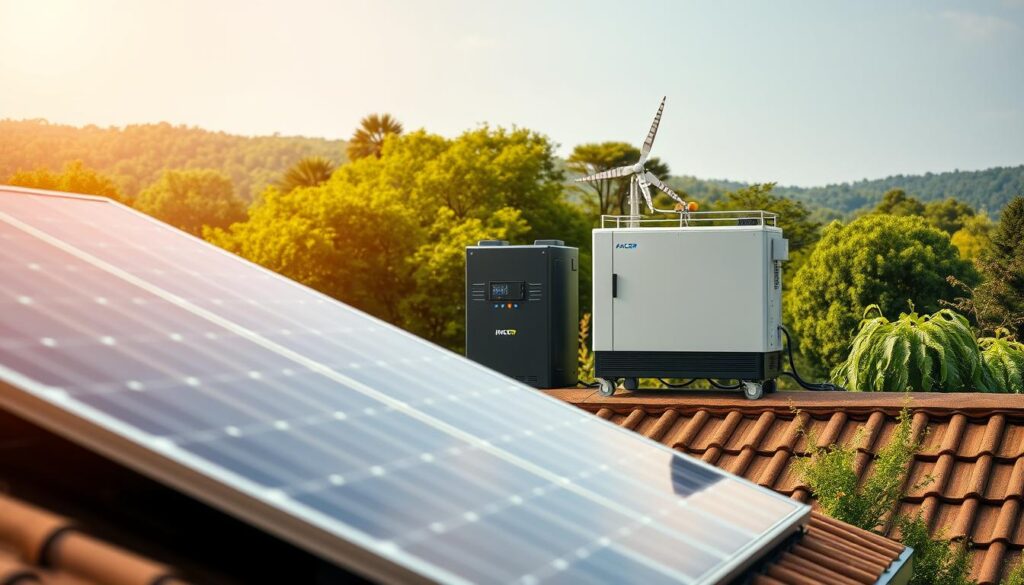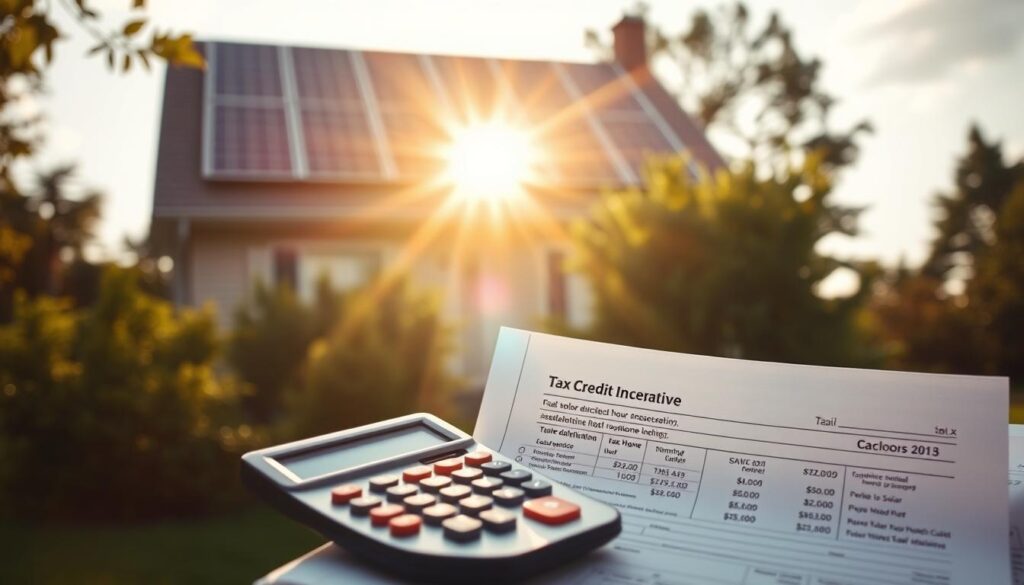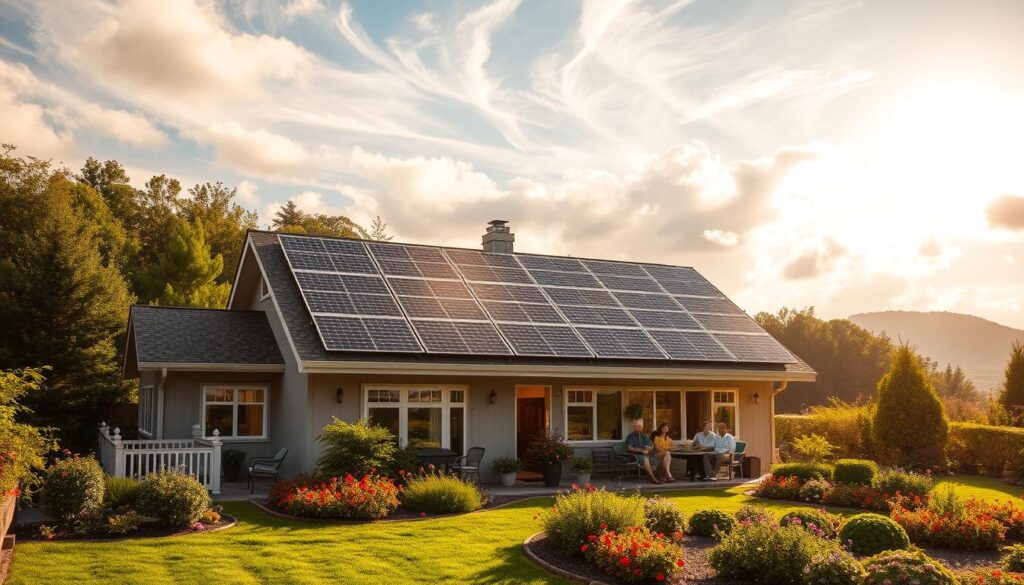Switching to solar energy is a smart move for both your wallet and the planet. Since 2008, solar installations have grown significantly, thanks to government investments making them more affordable. Today, homeowners across the country are reaping the benefits of this clean, renewable energy source.
By generating your own electricity, you can slash your utility bills and reduce your carbon footprint. Modern installations are designed to maximize efficiency, ensuring you get the most out of every ray of sunlight. Plus, with incentives like federal tax credits, the initial cost is often offset, making it a financially sound decision.
This article will guide you through the process, benefits, and financial impacts of going solar. Whether you’re looking to save on energy bills or contribute to a greener future, solar power offers a practical and long-term solution.
Key Takeaways
- Solar energy reduces utility bills and carbon footprints.
- Government incentives make installations more affordable.
- Modern systems maximize efficiency and energy production.
- Federal tax credits can offset initial costs.
- Solar power is a long-term, sustainable energy solution.
Understanding Solar Energy
Understanding how solar panels work can help you make informed decisions about energy use. At its core, solar energy is harnessed through a process that converts sunlight into usable electricity. This technology has evolved significantly, making it a reliable and efficient option for many.
How Solar Panels Work on a House
Solar panels are made up of multiple photovoltaic (PV) cells, typically constructed from silicon. These cells absorb sunlight and generate direct current (DC) electricity. The panels are assembled into modules or arrays to maximize energy production.
Once the DC electricity is generated, it flows to an inverter. This device converts the DC electricity into alternating current (AC), which powers household appliances. Modern inverters are highly efficient, ensuring minimal energy loss during the conversion process.
The Role of Photovoltaic (PV) Cells
PV cells are the heart of any solar panel. They work by using the photovoltaic effect, where sunlight knocks electrons loose from atoms, creating an electric current. These cells are designed with anti-reflective coatings to capture as much sunlight as possible, even on cloudy days.
Optimal panel orientation is crucial for maximizing energy production. Panels are typically installed at an angle that captures the most sunlight throughout the day. Weatherproofing ensures durability, allowing panels to perform efficiently for decades.
| Component | Function |
|---|---|
| Photovoltaic (PV) Cells | Absorb sunlight and generate DC electricity |
| Inverter | Converts DC electricity to AC for household use |
| Panel Array | Combines multiple panels to increase energy output |
Modern solar panels are engineered for efficiency and longevity. With warranties often guaranteeing 80% efficiency for 25 years, they are a dependable investment. By understanding the science behind this technology, you can confidently embrace solar energy as a sustainable solution.
Key Components of a Home Solar System
A well-designed solar setup relies on key components working together seamlessly. Each part plays a critical role in ensuring efficiency, reliability, and long-term performance. Let’s explore the main elements that make up a robust solar energy system.

Solar Panels, Inverters, and Batteries
Solar panels are the backbone of any system. They capture sunlight and convert it into electricity. Modern panels are highly efficient, with warranties often guaranteeing 80% performance for 25 years.
The inverter is another essential component. It converts the direct current (DC) electricity generated by the panels into alternating current (AC) for household use. Microinverters and string inverters are the most common types, each offering unique benefits.
Batteries store excess energy for later use, ensuring power availability during outages or at night. Lithium-ion batteries are popular for their longevity and efficiency, though AGM and gel batteries are also reliable options.
Importance of Smart Electrical Panels
Smart electrical panels enhance energy management by monitoring and optimizing power usage. They allow homeowners to track energy production and consumption in real time, ensuring maximum efficiency.
These panels also integrate seamlessly with inverters and batteries, creating a cohesive system. This coordination ensures that every component works together to deliver consistent, reliable power.
| Component | Role |
|---|---|
| Solar Panels | Capture sunlight and generate electricity |
| Inverter | Convert DC electricity to AC for household use |
| Battery | Store excess energy for later use |
| Smart Panel | Monitor and optimize energy usage |
The roof is more than just a support structure. Its orientation and condition directly impact the system’s efficiency. Panels should ideally face south for optimal sunlight exposure, though east or west orientations can also work well.
By integrating these components effectively, a solar system can deliver decades of reliable performance. Proper installation and maintenance ensure that every part works together to maximize energy savings and reduce environmental impact.
Financial and Environmental Benefits of Solar
Going solar can transform your energy costs while reducing your carbon footprint. This clean energy solution not only lowers monthly bills but also contributes to a healthier planet. By making the switch, you’re investing in a sustainable future while enjoying significant financial rewards.
Reducing Energy Bills and Increasing Savings
One of the most immediate benefits of solar power is the reduction in your utility bill. On average, homeowners save hundreds of dollars annually by generating their own electricity. Over the lifespan of a solar system, these savings can add up to tens of thousands of dollars.
Studies show that households with solar installations can cut their energy costs by 50% or more. This consistent reduction in monthly expenses provides long-term financial stability. Additionally, solar systems increase property value, making them a smart investment for any homeowner.
Lowering Your Carbon Footprint
Solar energy is a key player in reducing carbon emissions. By switching to clean energy, the average household can eliminate 3-4 tons of carbon dioxide annually. This is equivalent to planting 125 trees every year or removing a car from the road for months.
According to government-backed studies, solar power significantly decreases reliance on fossil fuels. This shift not only benefits the environment but also promotes energy independence. By choosing solar, you’re contributing to a cleaner, greener future for generations to come.
Tax Credits and Incentives for Solar Installations
Tax credits and incentives can significantly reduce the cost of renewable energy systems. By taking advantage of these programs, you can make your investment more affordable and accelerate your savings. Whether you’re considering a purchase or lease, understanding these financial benefits is crucial.

Federal Solar Tax Credit Opportunities
The federal solar tax credit, also known as the Residential Clean Energy Credit, covers 30% of the installation cost for systems placed in service between 2022 and 2032. This tax credit applies to solar panels, inverters, and even battery storage technology. It’s a powerful tool to lower upfront expenses.
Here’s how it works: If your installation costs $20,000, you could receive a $6,000 credit. This directly reduces the amount of tax you owe. If your credit exceeds your tax liability, you can carry the remaining amount forward to the next year.
“The federal solar tax credit is one of the most impactful incentives for homeowners transitioning to clean energy.”
Local Incentives and Utility Programs
Beyond federal programs, many states and utilities offer additional incentives. These can include rebates, grants, or performance-based payments. For example, some states provide property tax exemptions for solar installations, while others offer cash rebates based on system size.
Utility companies often have programs to encourage renewable energy adoption. These may include net metering, which credits you for excess energy sent back to the grid. Researching local programs can uncover even more savings opportunities.
When planning your installation, consider these steps:
- Check the Database of State Incentives for Renewables & Efficiency (DSIRE) for state-specific programs.
- Contact your utility provider to learn about available rebates or net metering options.
- Consult a tax professional to ensure you maximize your tax credit and other benefits.
Understanding the differences between purchasing and leasing is also important. Purchasing a system allows you to claim the full tax credit and enjoy long-term savings. Leasing, on the other hand, may require the leasing company to claim the credit, reducing your financial benefit.
Finally, consider how loans and other financing options fit into your plan. Many lenders offer specialized loans for renewable energy projects, often with favorable terms. By combining these options with available incentives, you can make your transition to clean energy both affordable and rewarding.
Exploring Types of Solar Panel Systems
Choosing the right solar panel system can make a big difference in energy savings. With various technologies and configurations available, it’s essential to understand the options to maximize efficiency and cost-effectiveness. This section explores the main types of panels and setups, helping you make an informed decision.
Monocrystalline, Polycrystalline, and Thin-Film Options
Monocrystalline panels are known for their high efficiency, ranging from 17-22%. They are made from single-crystal silicon, offering a sleek design and long lifespan of 25-35 years. However, they tend to be more expensive due to their energy-intensive manufacturing process.
Polycrystalline panels are more affordable, with efficiency rates of 15-17%. They use silicon fragments, reducing waste but also lowering performance. These panels typically last 20-30 years and are a cost-effective option for many.
Thin-film panels are lightweight and flexible, with efficiency around 11%. They are easier to install and less expensive but have a shorter lifespan of 15-25 years. Their lower efficiency makes them better suited for large-scale projects or areas with ample space.
Grid-Tied, Off-Grid, and Hybrid Setups
Grid-tied systems are the most common, connecting directly to the utility grid. They allow you to sell excess energy back through net metering, reducing costs. These setups are affordable and require minimal maintenance.
Off-grid systems operate independently, relying on batteries for energy storage. They are ideal for remote locations but come with higher installation costs due to storage needs.
Hybrid systems combine the best of both worlds, connecting to the grid while including battery backup. This setup ensures energy availability during outages and maximizes savings through net metering.
Considerations for System Size and Installation
The size of your solar setup depends on your energy needs and available roof space. Larger systems generate more power but require more space and investment. A professional assessment can help determine the optimal size for your requirements.
Installation factors include roof orientation, shading, and local weather conditions. Panels should ideally face south for maximum sunlight exposure. Proper installation ensures long-term performance and efficiency.
State regulations and incentives also play a role. Some states offer rebates or tax credits for specific energy systems, making certain options more appealing. Researching local policies can help you maximize savings and benefits.
| Panel Type | Efficiency | Lifespan | Best Use |
|---|---|---|---|
| Monocrystalline | 17-22% | 25-35 years | High efficiency, limited space |
| Polycrystalline | 15-17% | 20-30 years | Cost-effective, moderate space |
| Thin-Film | 11% | 15-25 years | Large-scale, flexible installation |
“The right solar panel system depends on your energy needs, budget, and local regulations. Choosing wisely ensures long-term savings and sustainability.”
By understanding the different options and configurations, you can select a solar setup that meets your needs. Whether you prioritize efficiency, cost, or independence, there’s a solution for every energy system requirement.
Benefits of a home with solar Installation
Energy independence and increased property value are key benefits of solar installations. Studies from the Lawrence Berkeley National Laboratory show that properties equipped with solar systems sell for an average of 4% more than comparable ones without. This boost in market value is comparable to traditional upgrades like kitchen renovations, making it a smart investment.

Boosting Market Value and Energy Independence
Going solar not only enhances your property’s appeal but also reduces reliance on the grid. By generating your own electricity, you gain energy independence, ensuring power availability even during outages. This resilience is a significant advantage, especially in areas prone to extreme weather or grid instability.
Selecting a reputable installer is crucial for maximizing these benefits. A trusted company ensures quality installation, optimal system performance, and long-term reliability. Researching customer reviews and certifications can help you identify the right partner for your project.
Cost Savings and Practical Considerations
Solar installations offer substantial cost savings. On average, homeowners save $1,000 annually on electricity bills, with total savings reaching tens of thousands over the system’s lifespan. These financial benefits, combined with federal tax credits, make going solar a financially sound decision.
To evaluate the need for solar, consider your property’s specifications and local energy rates. Factors like roof orientation, shading, and available space play a role in determining the system’s efficiency. A professional assessment can provide tailored recommendations for your property.
“Investing in solar energy is not just about savings—it’s about creating a sustainable future while enhancing your property’s value.”
- Solar installations increase property value by an average of 4%.
- Energy independence reduces reliance on the grid and ensures power during outages.
- Choosing a reputable installer guarantees quality and long-term performance.
- Annual savings on electricity bills can exceed $1,000.
- Federal tax credits and local incentives further reduce installation costs.
By embracing solar energy, you’re not only investing in your property but also contributing to a cleaner, greener future. The advantages of going solar extend beyond financial savings, offering energy resilience and environmental benefits that last for decades.
Conclusion
Embracing clean energy solutions can lead to significant financial and environmental benefits. Over the years, advancements in technology and supportive policies have made renewable energy more accessible and affordable. By investing in solar, you can reduce energy costs, increase property value, and contribute to a greener planet.
From efficient panel systems to federal tax credits, the advantages are clear. Government policies and yearly improvements ensure reliability and cost-effectiveness. With options like grid-tied or hybrid setups, there’s a solution for every need.
So, here’s the final question: Are you ready to explore how clean energy can work for you? Take the next step today. Consult a professional to discover the best options for your lifestyle and budget. The future of energy is here—make it yours.
